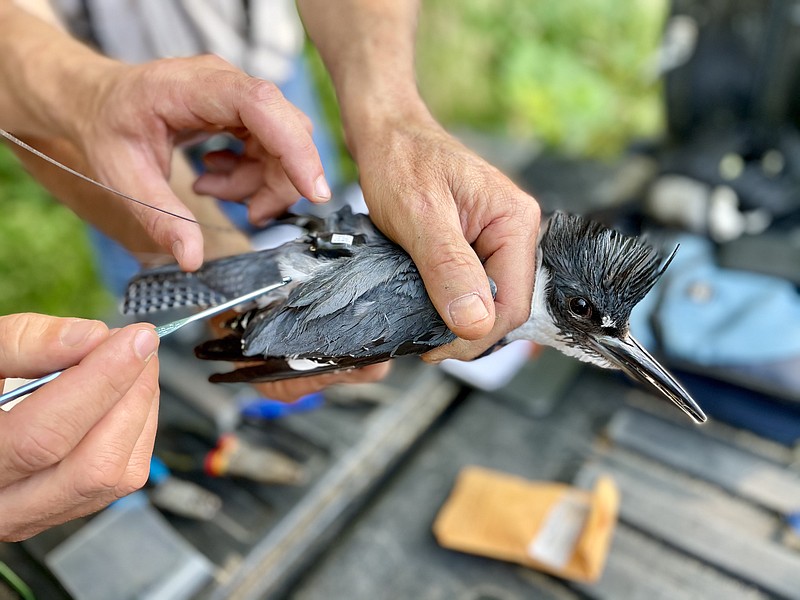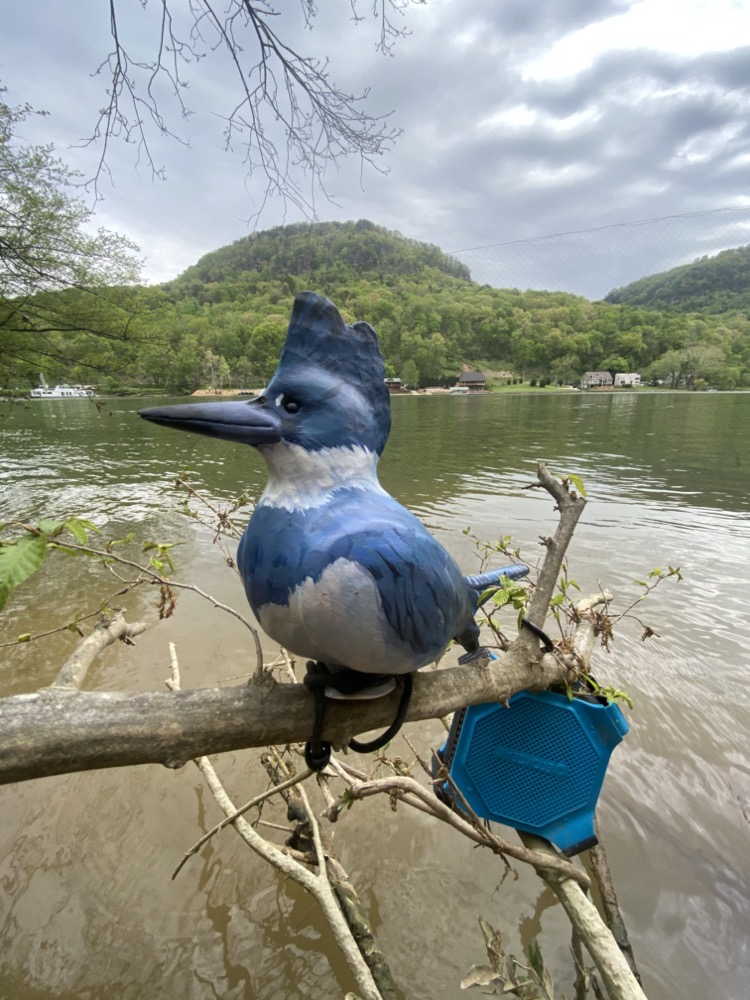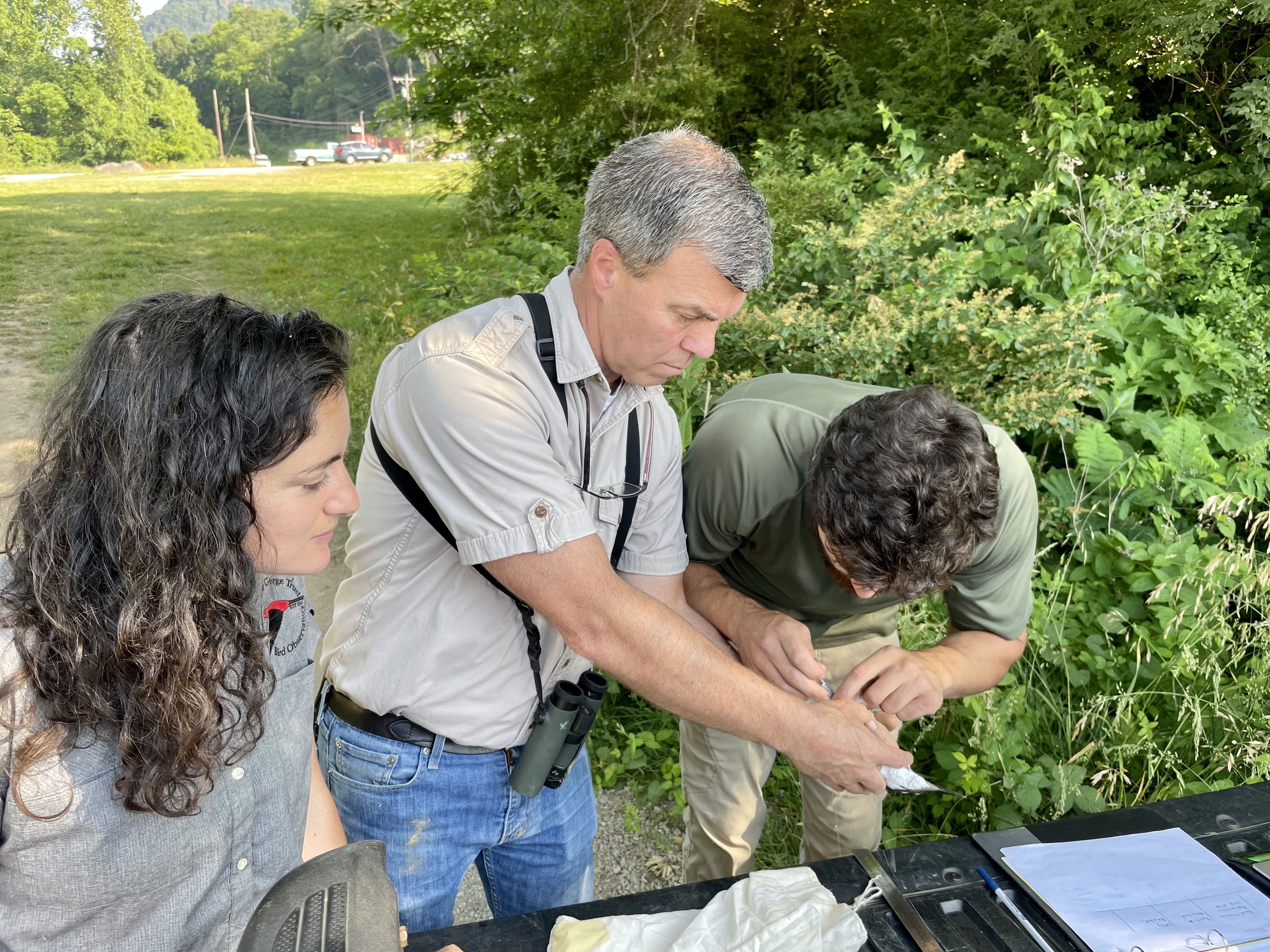With its stocky blue body, oversized head and shaggy crest, the belted kingfisher is an iconic species found along waterways throughout North America.
But as charismatic and widespread as it is, says Angie Langevin, the Tennessee River Gorge Trust's conservation director, the species is not well understood - which is something that she and the trust hope to change.
This April, the trust launched a first-of-its-kind pilot research program to study and track the seasonal movements of the belted kingfisher.
The reason the kingfisher has remained so mysterious, Langevin says, is a mystery itself.
"We've asked each other that question a lot," she says, surmising that perhaps it is because science often focuses on species in decline, and belted kingfisher populations are relatively steady. Or, she suggests, maybe it's because kingfishers are notoriously difficult to capture and study. "They have very good eyesight and can see the nets that smaller birds fly right into," Langevin adds, referring to the extremely fine nylon "mist nets" used by ornithologists. "We found that it helped having the net up super early in the morning, before the sun can hit it."
Moreover, Langevin and her team, which includes trust Executive Director Rick Huffines and avian researcher Eliot Berz, found it also helped to camouflage their boat and themselves and to attract the birds using decoys and Bluetooth recordings of a kingfisher's territorial call.
Upon their capture, the goal is to equip individuals with GPS tracking units, using a cutting-edge technology capable of providing highly accurate locations in real time.
In all its previous tracking research, the trust has used geolocators, an electronic device that records ambient sunlight to help determine the animal's location over time. However, the obstacle is that in order to retrieve that data, the bird must be recaptured.
These new units will relay the data automatically, from anywhere in the world, so the data can be downloaded online.
"Up until recently, these kinds of [trackers] weren't small enough to safely put on birds. It's exciting because technology is finally to a point where we can do this," Langevin says. "As far as we know, nobody has used satellite trackers on belted kingfishers."
To date, the team has managed to tag two males and two females with GPS trackers.
"Kingfishers are very feisty," Langevin says. "We named one of them 'Chainsaw Charlie' after it bit the fool out of Rick. Their bills can cut fish in half, so you have to respect them - and go through the process as fast as possible."
The next step, she says, will be keeping a close eye on the re-released kingfishers to ensure the trackers properly work.
"That's the big thing," Langevin says. "We want to make sure this study is safe and that we can replicate it."
Eventually, the team hopes to share an interactive map that will allow anyone to follow the kingfishers' movements.
"We are super-excited to get data from the winter. We've been trying to guess where we'll find the females. The Bahamas? Georgia? We have a hypothesis that the males may stay in the gorge and defend the territory while the females leave," she says.
The kingfisher, says Langevin, is just one piece of much a much larger picture. By solving some of its mysteries, the trust hopes to have a better understanding of the river gorge as a whole.
_____
What's your favorite kingfisher fact?
Female belted kingfishers display a cinnamon-colored belt around their lower bellies, but males do not, Langevin says.
"It's cool because with birds the male is generally more advertised. But with kingfishers the females are more brilliantly colored," she says.
But what's more, she continues, is that in these cases, the behavioral roles are typically reversed, too. Females compete to mate with males, rather than the other way around, and males are responsible for incubation and parental care duties.
However, the belted kingfisher, Langevin learned through her research, is an egalitarian species.
"There is no flip. Both the male and the female do courtship displays. They both defend territory and hunt. They both build nests and incubate eggs in equal time," she says.


